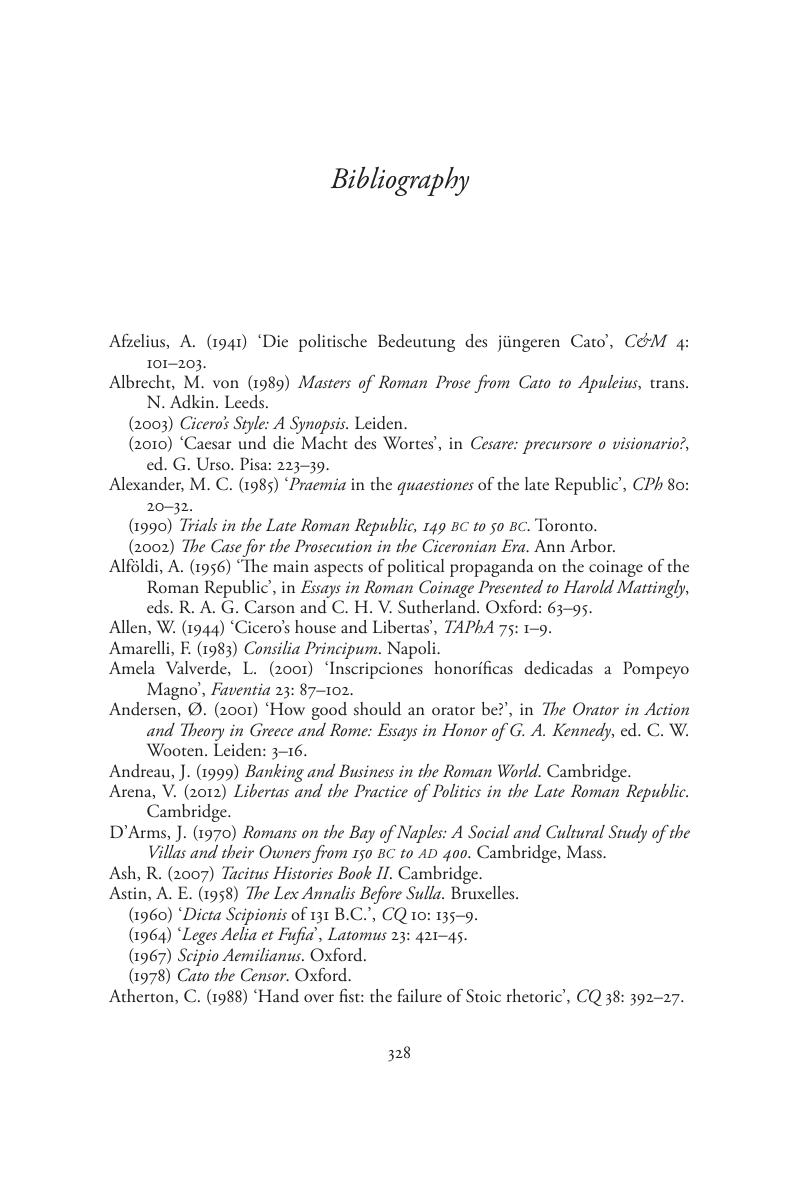Book contents
- Oratory and Political Career in the Late Roman Republic
- Oratory and Political Career in the Late Roman Republic
- Copyright page
- Dedication
- Contents
- Preface
- Abbreviations
- Frontispiece
- Introduction
- Part I The role of oratory in Roman politics
- Part II Themes and oratorical careers
- Book part
- Bibliography
- Index locorum
- Subject index
- References
Bibliography
Published online by Cambridge University Press: 05 August 2016
- Oratory and Political Career in the Late Roman Republic
- Oratory and Political Career in the Late Roman Republic
- Copyright page
- Dedication
- Contents
- Preface
- Abbreviations
- Frontispiece
- Introduction
- Part I The role of oratory in Roman politics
- Part II Themes and oratorical careers
- Book part
- Bibliography
- Index locorum
- Subject index
- References
Summary

- Type
- Chapter
- Information
- Oratory and Political Career in the Late Roman Republic , pp. 328 - 362Publisher: Cambridge University PressPrint publication year: 2016

